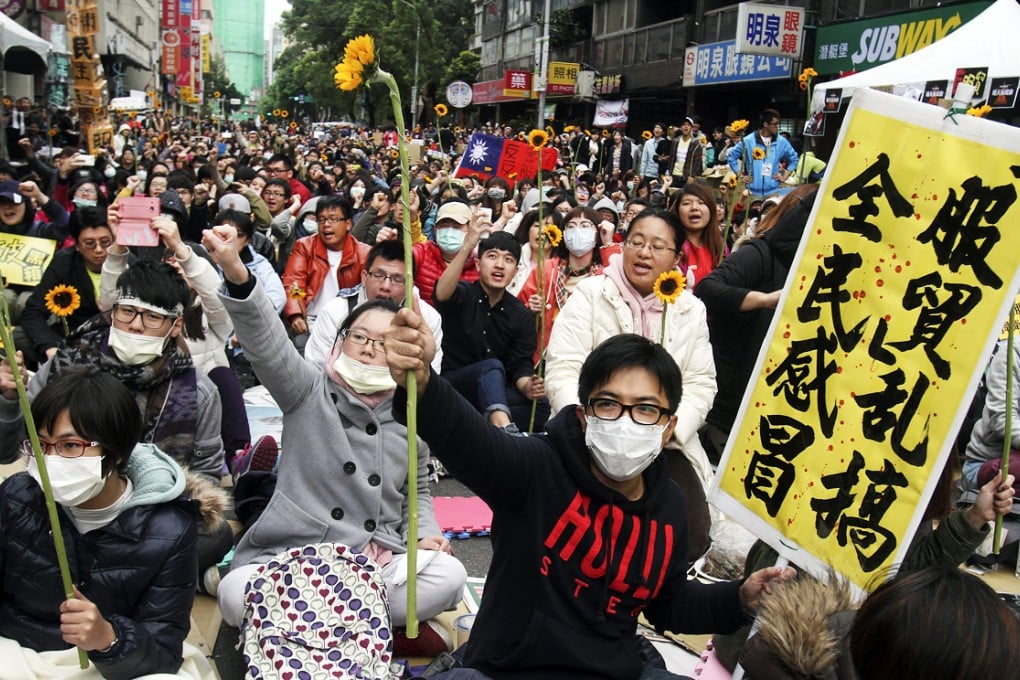One year on: impact of ‘sunflower’ movement protests in Taiwan continues to blossom
The island’s political landscape has shifted dramatically in the 12 months since students first occupied Taiwan’s parliament in an audacious protest against trade links with China

A year after students occupied Taiwan’s parliament in an audacious protest against trade links with China, the island’s political landscape has shifted dramatically.
About 200 students and activists broke through security lines and seized the main parliamentary chamber on March 18 in what became known as the “sunflower” movement, with thousands of supporters rallying on the streets of the capital, Taipei.
The demonstrations were sparked by a service sector trade pact with China that protesters said had been agreed secretly.
Their anger reflected wider discontent over ties with China, which have improved under President Ma Ying-jeou, who came to power in 2008.
While the thaw has led to trade agreements and a tourist boom, some feel ordinary people have seen little benefit and there are growing fears over Beijing’s influence.